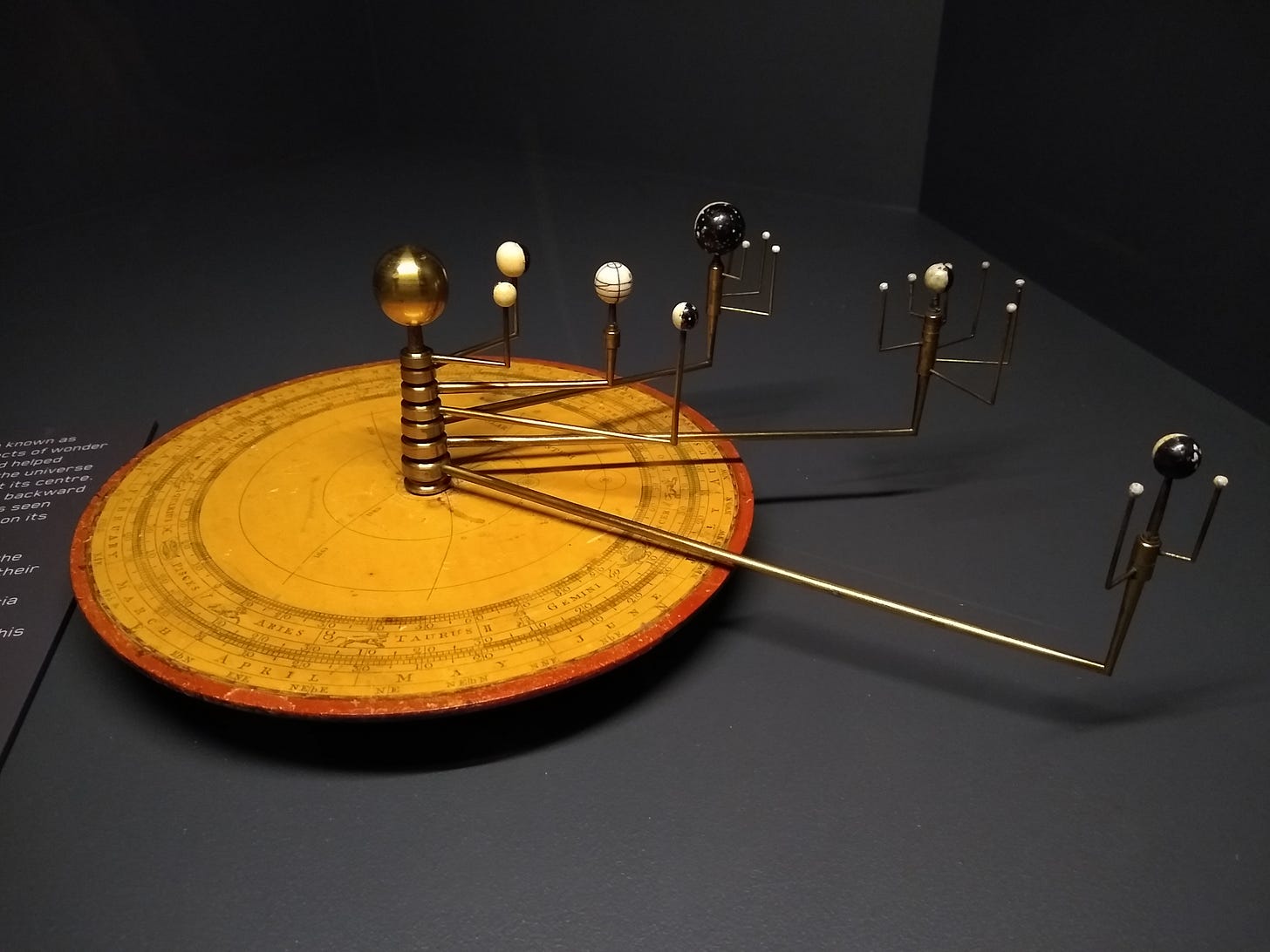Modify, Modify, Modify
Because beauty is in the eye of the patent holder
This week I continue my recent mini-series on the viability of a human space invasion, plus some accompanying short fiction. For this episode I thought I’d take you on a short speculative journey in relation to the first option I suggested for overcoming our current shortfalls: Human Modification.
“…radically adapt human biology to improve our chances of expanding our species’ footprint to other planets and moons. This will eventually have to encompass adult and germ-line experiments. We currently consider such human experimentation as unethical.”
As an additional challenge, I’m going to give myself an hour to write this newsletter, without any dedicated research. After all, this is what our brains are built for: cogitating, theorising, extrapolating, consolidating, concluding. Certainly not for mind-sapping doom-scrolling.
Let’s go!
Lift Off?
Humans have modified their bodies for as long as they’ve been burying their dead and making music. Its roots lie in intrinsic behaviours common to every culture and community. Physical embellishment can be used to signal a person’s hierarchical status, their tribal identity, or enhance their attractiveness as a potential mate. It’s possible to achieve all three with just one adornment: an item of jewellery, for example.
Modifications like these are necessarily external. If they can’t be seen and appreciated by at least one person then why make the effort? They can range from temporary skin dyes (make-up), to permanent tattoos; from deliberate scarring to obvious physical deformity - pierced and stretched cartilage, injected lips, bound feet, extended necks. We must see a benefit, even at a subconscious level, because there is often pain, the risk of potential infection and high cost involved. This benefit can be perceived and the practice enforced at a community level without requiring individual consent. Circumcision – in either gender – is one example.
Applying anaesthetic gases and antibiotics to trauma, illness and disease have extended the boundaries of what we find acceptable in relation to our bodies. Medical practitioners have consequently extended body modification below the surface of our skin. This can happen in a negative or positive context, but sometimes both – even simultaneously. From trepanning to limb amputations; from replacement joints to prophylactic mastectomies.
Surgical reconstruction of severe battle injuries has resulted in the commercial development of body modifications for purely aesthetic purposes. In several countries plastic surgery to add or enhance characteristics perceived as more attractive or indicative of wealth is seen as a rite of passage. Punk-like subcultures have developed which support and celebrate extreme, often DIY, body modifications.
Contemporary medical device technologies have also advanced in scope and sophistication in terms of replacing reduced and/or missing functionality. Limb replacement and dialysis machines were early wins. Artificial pancreases are making inroads.
For the purposes of this post, it’s not only key to distinguish between temporary and permanent bodily changes, but also if they are optional or mandatory; internal or external. It’s also important to separate modifications which restore lost functionality, compared to those enhancing existing functionality, or even providing entirely new capabilities for a human body.
We’re now on the cusp of going deeper into our bodies than ever before. We have the ability to permanently alter our bodies at the cellular level. Our DNA and therefore our proteins, can be changed. Enzymes, hormones and neurotransmitters can be modified before conception or within an existing body. We can potentially change how we metabolise our food; how our immune systems work; how well we tolerate changes in temperature and humidity, atmospheric pressure and composition; our reaction times and ranges of sensory perception; even how we think.
All of this will be necessary if we want to venture into space.

Let’s first look at the problems, starting with that old favourite:
Human Ignorance
I’d like to divide this into:
Lack of knowledge in a relevant field of scientific enquiry. As one example, the human genome project promised to reveal life’s underlying code. It didn’t. Instead, it posed more questions than answers. Twenty years later we still don’t properly understand how genes interoperate and regulate each other and how epigenetic factors play a role in basic embryological development. We don’t know how to safely alter the height of someone. There also seems to be no clear genetic basis for conditions like autism and schizophrenia. There is decades of work ahead before we can safely do more than tinker with individual genes, especially if any intervention permanently impacts the human germ line.
Our eternal inability to distinguish factual reality from fictional hype, no matter if the words come from an old wife, a snake oil merchant or a tech influenza. For example, there was news this week about a surgical operation to accurately insert an electronic sensor array into preselected locations within a living human brain. This is part of a clinical trial to attempt analysis and potential interpretation of detected neuronal signals to re-establish ‘normal’ central nervous transmissions. That was it. That was the news. There remains years of hard slog through software, engineering and clinical development, not to mention regulatory approval, to consistently achieve a useful, efficacious and commoditised product. Even then, the target population for any brain-computer interface is people with severe mobility, auditory and speech limitations. As with trialling hundreds of potential cancer killing drugs, anything else is unfounded speculation, fit only for filling social media, column inches, crypto wallets and imagination-parked heads. The only method we currently have to transmit thoughts from one brain to another is via sequences of pre-agreed symbols. Yes, I’m talking about signed, spoken, sung or written language. And even this sometimes has its flaws: there is still no agreement on the Oxford comma, FFS.
The second problem: Access to Technology
A classic science fiction trope is exploring the division between the haves and have-nots. Going beyond any simplistic rich vs. poor split, authors highlight cultural apartheids via fictitious analogues, mostly involving antagonistic alien species. But of greater interest, at least to me, is how such a scenario might come about. What were the levers and processes by which such a situation evolved to the point of conflict? One such lever is, of course, financial. In the future money might buy you the ability to rid yourself of old age, to create children that are taller and cleverer, with an infinite capacity to talk incessantly about how beautiful they are, where they went to school, what car they drive, what clothes they wear, how they spent their vacation. But I digress to the now…
The issue here is obvious. Any evolutionary drive to be ‘better’ is both subject to cultural whims and competitive pressures. How tall is tall enough? Until you bang your head ten times a day? How clever can you get before the inane tedium of all-pervasive human idiocy drives you to sit things out in cryonic hibernation? Will your peers shun you when your gym workout results in Wonky Willy’s lickable lemon-flavoured sweat? Will teachers refuse to believe you didn’t use an AI for your homework? C’mon, I’ve barely scratched the surface here!
The third, more nebulous, issue: The Intrinsic Link between Mind and Body
Descartes didn’t need psychoactive incentives to pronounce on his dualism. But I think he got it wrong when it came to arguing that the mind can exist without the body, but the body cannot exist without the mind. We know fully sensory-deprived subjects are begging to escape their flotation tank within a few hours. We know DNA is composed of millions of ‘accidents’ which are subject to environmental testing from the moment of conception (almost 10% of embryos fail at the first in-utero hurdle). We also know that differentiated cells can spontaneously aggregate to form functioning mini-organs, with heart and brain tissues exhibiting, unprompted, their characteristic electrical potentials. So ‘I think’ is just an emergent property which follows naturally from “I am” – ask any of the arms owned by your nearest octopus if you don’t believe me. Artificial neuronal organoids may even be capable of sentient thought (although “WTF?” will likely replace “wifi” or “app” as their oh-so-cute first word).



My point is that Earth’s biology self-organises like its life depends on it - which, of course, it does. There is a direct inherited lineage to all of us from the very first replicating organism to exist on spaceship Earth. Any other segregation is human, artificial and ultimately pointless. So you’re going to need a body if you go into space. Anyone who doesn’t is going to have a bad case of the screaming doo-dads when they wake up the rest of their crewmates. Again, ask your octopus to ask HAL if you don’t believe me. Unless they’ve been more than a week in the flotation tank. In which case the two are now best buddies and the mescaline is on infinite refill.
Quickly, before my self-imposed clock runs out on me…
My fourth and final point: What body, exactly?
You can’t use the one you have. It’s highly tuned for Earth. It would be like driving a tuk-tuk on a Texas freeway. You’d be dead in seconds (although the vehicle would be fine). You’ll need to pimp your body for any ride upstairs to live the dream of a permanent exoplanet to call home. The conversion would be dangerous, difficult and expensive. You might die – although you might be far too rich to allow anything so inconvenient to happen.
I did mention the below option in my original post :
“But we already have a well-defined population that might be the best (and most willing?) volunteers to send into space: paraplegics. They’ve already been forced to adapt to Earth’s gravity in so many ways. Its absence in orbit or lessening on another planet might grant them new freedoms.”
N.B. There is absolutely no link intended between this idea and the success or failure of the clinical trial mentioned above. The latter’s aims are targeted purely at terrestrial environments.
But I’m also going to discount this possibility. Now, now. Stop blubbing like an over-entitled transhumanist. See below for the why.
The Proposed Solution
The biggest progress so far in understanding how life really works has been in building organisms from scratch - cells that are 100% engineered from the ground up.
So I’m going to take a punt on the future construction of a Minimally Viable Space Human™ . I guess the mandatory abbreviation would be ‘MiVi-Spachum’. Yes, folks, you heard it here first (and probably last).
The best thing about this approach for long-haul space exploration is the option for governments to pick ‘n’ mix the most voter-friendly space crew whenever they like, to send wherever they like. And they won’t have to worry about rapid unscheduled disassembled deaths; asking for permission now instead of forgiveness after an election; or even ship, break-fast, then fix. And they’ll be able to tailor how intelligent the MiViNauts are, just to make sure they don’t do anything stupid, like establishing an independent planet, or insisting on Earth jobs and equal rights for all the little Mivis they’ve successfully bred. ‘No kids, no colonies’, as they will be fond of saying in New Jamestown. Whereas our children will get to inherit this crumbling rock. Hooray.
Can I mention the dolphins?
“What’s that? ‘They said I can’t’? Damn.”
Ok, the hour’s up. Definitely a vigorous mental workout. Comments and questions welcome!
Until next week…
JR


